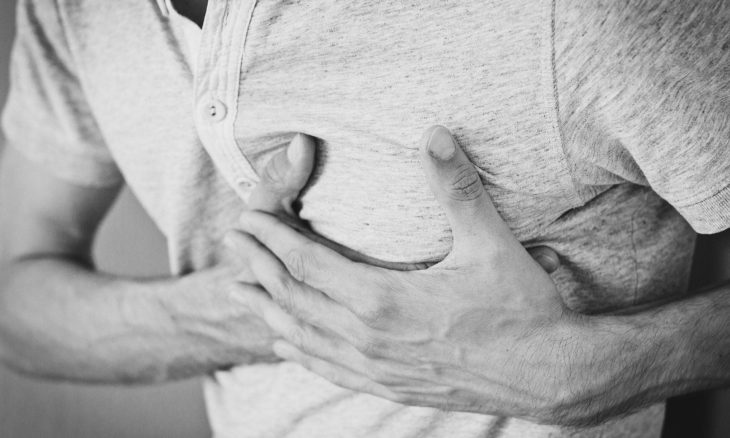
Last Updated on January 2, 2020 by Surender Kumar
The heart is a delicate organ that can sometimes stop functioning as expected. It is essential to enroll for first aid and CPR certification online to learn more. Accidents occur when you are least expecting, thus causing a heart attack.
Table of Contents
The Signs and Symptoms of a Heart Attack
People who already undertook first aid and CPR certification online understand that the main symptom of heart failure is chest pain. It begins at the core of the chest and spreads to the neck, jaws, arms, shoulders, ears, spine, and stomach.
The pain is severe since it feels like a burning sensation, constriction of the chest, and pressure inside the chest. It is similar to the ache felt during heartburn or when the stomach bloats.
Other signals are:
- The tiredness of the body
- Dizziness or lightheadedness
- Anxiety and panic attacks
- Cold sweat and feeling clammy
- Difficulty in breathing
- High pulse rate
These signs vary in women, diabetic people, or the elderly.
Women may not experience pain inside the chest.
What to do When you Feel the Symptoms of Heart Failure
- Call an emergency line or request someone to do if for you
- If you had taken a diagnosis before, take aspirin according to the prescription of the doctor
- If you have access to a vehicle, visit the doctor immediately
What to do Before the Ambulance Arrives
- Check for a pulse. If the victim is breathing, begin CPR chest compressions at a rate of 100 pumps per minute to ensure that blood is circulating
- If you have undertaken CPR training, you can perform CPR mouth action to the victim effectively
- Keep any pets away from the victim
- Find a way of knowing the medications from the victim’s general practitioner
- Provide information about allergies or medicine reactions of the victim
- Tell the medical team if the victim took any aspirin
Cardiac Arrest
It occurs suddenly after the heart fails and stops beating, making a person unconscious, motionless, breathless, and unresponsive to stimulation like touch or speech.
The condition claims many premature lives. The only way to save people who suffer from sudden cardiac arrest is immediate treatment. The stoppage of the heart is a result of alteration that disorganize the electrical rhythm inside the heart.
Medical teams should be agile enough to treat and resuscitate victims.
Differences Between a Heart Attack and Cardiac Arrest
The interruption of blood flow to a section of the tissue inside the heart qualifies to be a heart attack, whereas a sudden stoppage of circulation of blood in the whole body is cardiac arrest.
During a heart attack, a victim is conscious and breathing, whereas a cardiac arrest causes unconsciousness and stops breathing.
Response to a Cardiac Arrest Emergency
- Find someone to call an emergency help service line
- As you wait for the medical experts, try chest compressions, or use a defibrillator as quick as possible if the equipment is readily available
Hands-only Cardiopulmonary Resuscitation or Chest Compressions
After making an emergency service call, it is the right time to begin chest compressions to increase the chances of the victim’s survival.
Before starting anything, investigate the surrounding environment for any potential risks that could change the situation significantly.
Procedure
- Rest your arm heel on top of the breastbone at the core of a victim’s chest. Place the other arm’s hand onto the first arm and interlock the fingers
- Begin pressing down using bodyweight at a range of 5-6 centimeters
- Continue the process until help arrives permanently
- Ensure you perform 100-120 chest compressions every minute
Defibrillators
The most suitable is an automated external defibrillator. The device is secure and runs through electrical charges. It does not miss in the first aid kits of many large companies, public facilities, gymnasiums, train stations and, home town meeting places.
The device emits a shock that halts the heart to enable it to resume the normal rhythm. There is a manual which comes with instruction and clear guidelines on how to use the device.
During the procedure, the victim should be lying in a comfortable position. Once the victim becomes conscious, they need to rest in a recovery position.
What to Do When You Have Angina and Chest Pain?
Angina is a feeling of a tight chest that can travel to other parts of the body. The ache intensity varies during some intense experience pain, others have a mild burning sensation.
- Stop doing the task you had and sit. Consume a dose of spray or Tablet GTN and remain calm for about five minutes
- If pain persists, consume a second dose and stay calm for another five minutes
- Chew an aspirin
- If there is no change, call an emergency helpline
Nancy is a Fitness & Nutritionist Who Believes in Living a Healthy Lifestyle. She Loves to write about mental health and life hacks. She is working with Sober Living Homes In San Francisco. She provide daily fitness tips, detailed fitness guides & fitness gear reviews.
